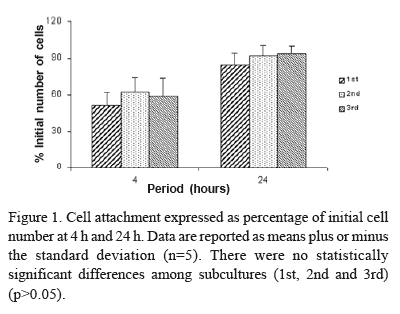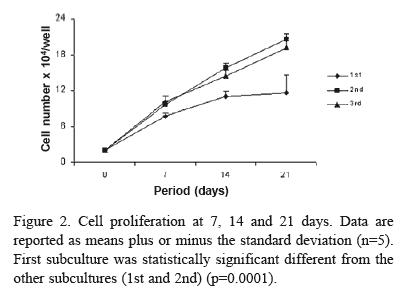Bone marrow cells have been used for testing biocompatibility of bone substitute materials that would be applied in maxillofacial and orthopedic surgeries. However, it remains unclear whether cells in serial subcultures retain the ability to differentiate into osteoblasts. The purpose of this study was to compare the development of osteoblast phenotype of serially passaged cells from human bone marrow. Cells from first to third passage were cultured (2x10(4) cells/well) in supplemented culture medium. Cells were incubated at 37ºC in a humidified atmosphere of 5% CO2 and 95% air. Cell attachment was assessed at 4 and 24 h. At 7, 14 and 21 days, cell proliferation, cell viability, total protein content and alkaline phosphatase (ALP) activity were evaluated. Bone-like formation was evaluated at 14 and 21 days. Data were compared by two-way ANOVA and Duncan's multiple range test. Cell attachment, cell viability and total protein content were not affected by serial subcultures. However, serial subcultures did interfered negatively with osteoblast differentiation as shown by osteoblast parameters observed in second and third subcultures, such as continuous cell proliferation, lower ALP activity and bone-like formation in comparison to first subculture. Therefore, it is important to evaluate cell ability to growth and differentiate before selecting the cell population for studies that investigate the biocompatibility of materials to replace bone tissue.
biocompatibility; human bone marrow; cell culture; osteoblast phenotype






